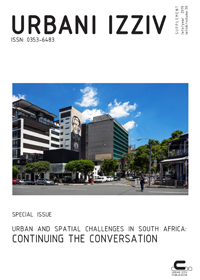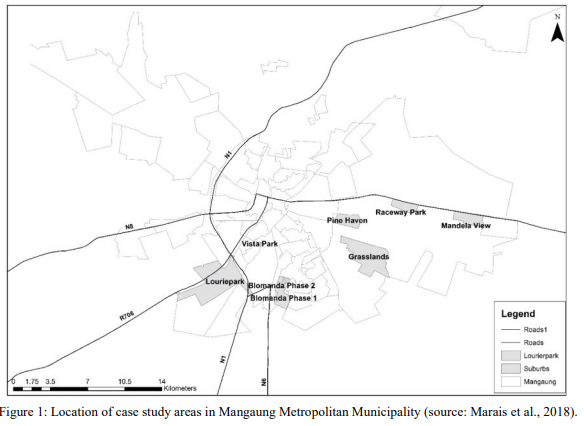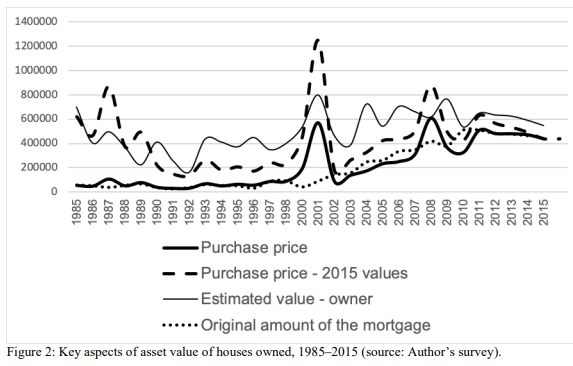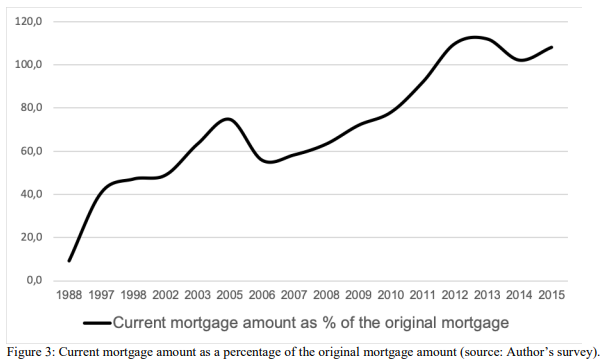 Kazalo
Kazalo
Slike

Slika 1: Location of case study areas in Mangaung Metropolitan Municipality (source: Marais et al., 2018)

Slika 2: Key aspects of asset value of houses owned, 1985‒2015 (source: Author’s survey)

Slika 3: Current mortgage amount as a percentage of the original mortgage amount (source: Author’s survey).
Urbani izziv Leto 30, št. supplement, februar 2019
: 129-143
(Članki)
doi: 10.5379/urbani-izziv-en-2019-30-supplement-009
Avtor
Olebogeng LITHEKO
Department of Construction Management, University of the Free State, Bloemfontein, South Africa
LithekoOM@ufs.ac.za
Lochner MARAIS
Centre for Development Support, University of the Free State, Bloemfontein, South Africa
MaraisJGL@ufs.ac.za
Joris HOEKSTRA
Delft University of Technology, Delft, The Netherlands, and Centre for Development Support, University of the Free State, Bloemfontein, South Africa
J.S.C.M.Hoekstra@tudelft.nl
Jan CLOETE
Centre for Development Support, University of the Free State, Bloemfontein, South Africa
CloeteJS@ufs.ac.za
Molefi LENKA
Centre for Development Support, University of the Free State, Bloemfontein, South Africa
LenkaMP@ufs.ac.za
Naslov članka
Black middle-income housing and asset building in
Mangaung, South Africa
Povzetek
Asset-building policies are used worldwide to reduce state welfare commitments. In the Global South, including
South Africa, asset-based housing development is thought to help reduce poverty. This study investigated asset
building and homeownership in a sample of South Africa’s emerging black middle class. Interviews with 244
black middle-class households in Mangaung revealed asset value creation and heavy dependence on mortgage
finance. Levels of mortgage default were low, although households with recently secured mortgages struggled
to pay them off. We found little evidence that property-owning is helping these households to move out of
poverty. Their ability to afford mortgage loans appeared to be directly related to their own efforts and human
capital. Very few had considered downsizing as an option, possibly because ownership of a house has social
value, for passing on to the next generation. Asset building was still in its early stages and, because these
households had been denied equal opportunities and barred from homeownership by the apartheid regime, very
few intergenerational transfers had yet occurred.
Ključne besede
asset building, black middle class, housing, inheritance, poverty alleviation